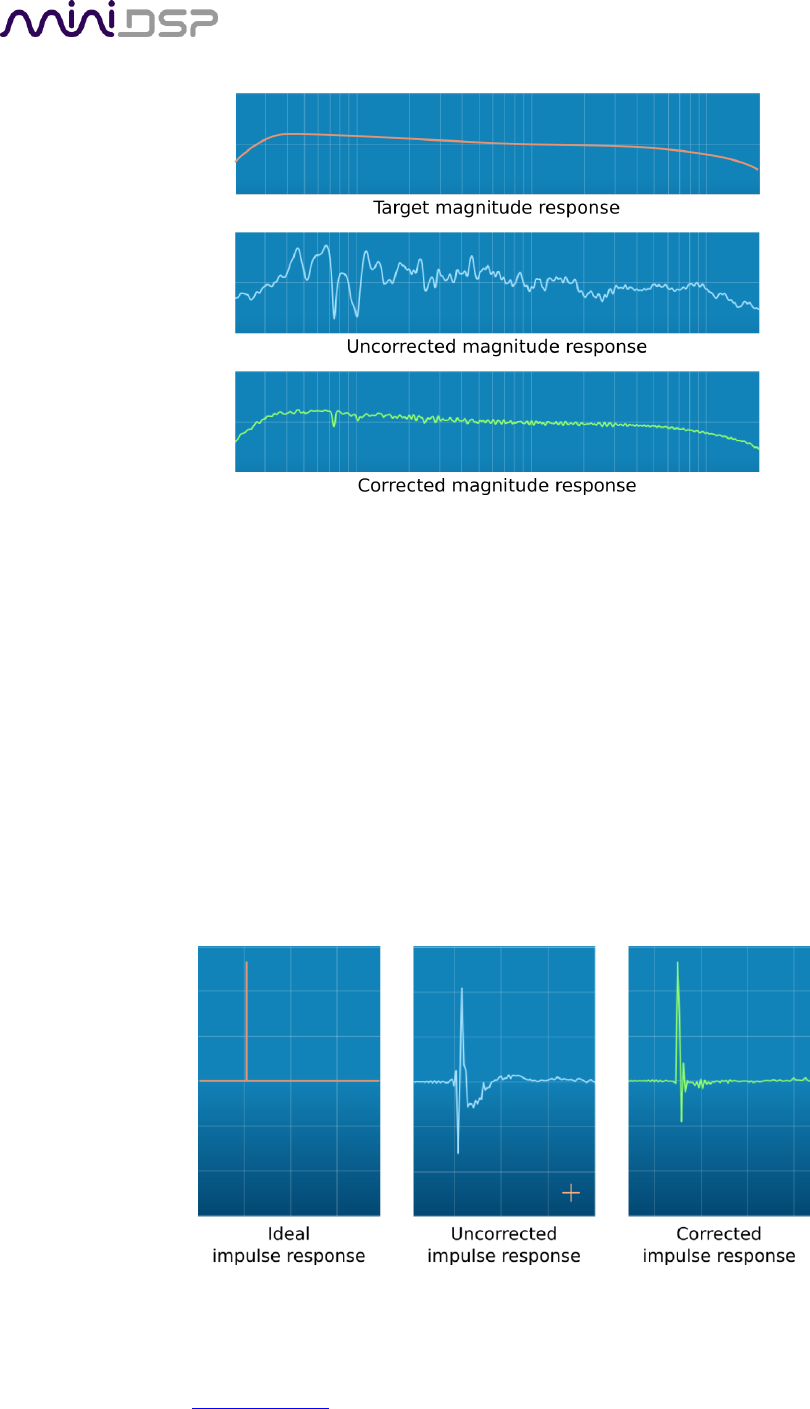User manual
Table Of Contents
- Important Information
- 1 Product Overview
- 2 Installation and Setup
- 3 Acoustic Measurement
- 4 Filter Design
- 5 Using the DDRC-88A audio processor
- 6 Optimizing gain structure
- 7 Additional Information

PRELIMINARY AND SUBJECT TO CHANGE
miniDSP Ltd, Hong Kong / www.minidsp.com / Features and specifications subject to change without prior notice 9
Illustration of Dirac Live® magnitude response correction
Dirac Live® accomplishes this using mixed-phase filters – filters that match a desired magnitude response and
generate a customized impulse response. This contrasts with the minimum-phase and linear-phase filters that
are commonly used in audio applications. While minimum-phase and linear-phase filters are relatively easy to
design, they are tightly constrained in their impulse response characteristics – neither can make a desired
change to the magnitude response independently of controlling the impulse response. In some cases, they may
even make things worse.
Mixed-phase filters are more difficult to design, but the audible performance of Dirac Live® is due to its success
in using mixed-phase filters to make the system response across the whole listening area more closely resemble
that of an ideal speaker. The energy from the direct wave and from early reflections is optimally combined to
arrive as a single wavefront to the listener. Late reflections are left largely untouched, being corrected only for
their spectral coloration, as they contribute to a larger, more enveloping soundstage.
Illustration of Dirac Live® impulse response correction










